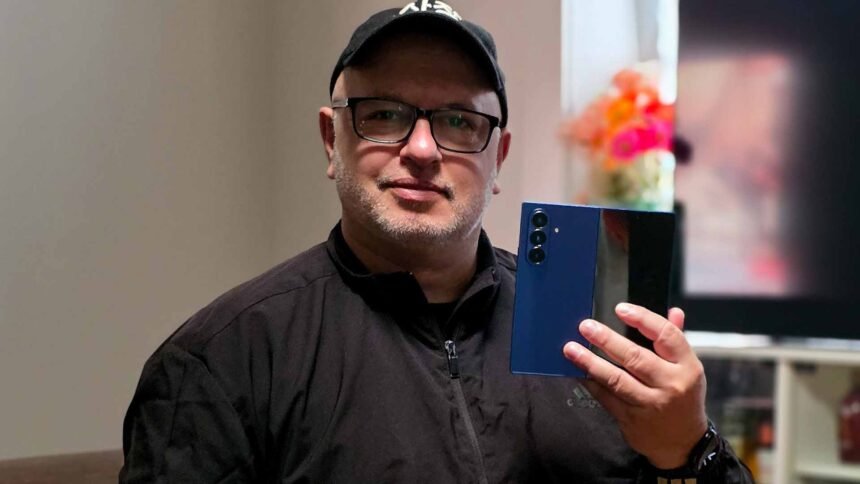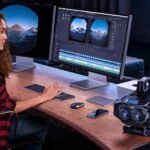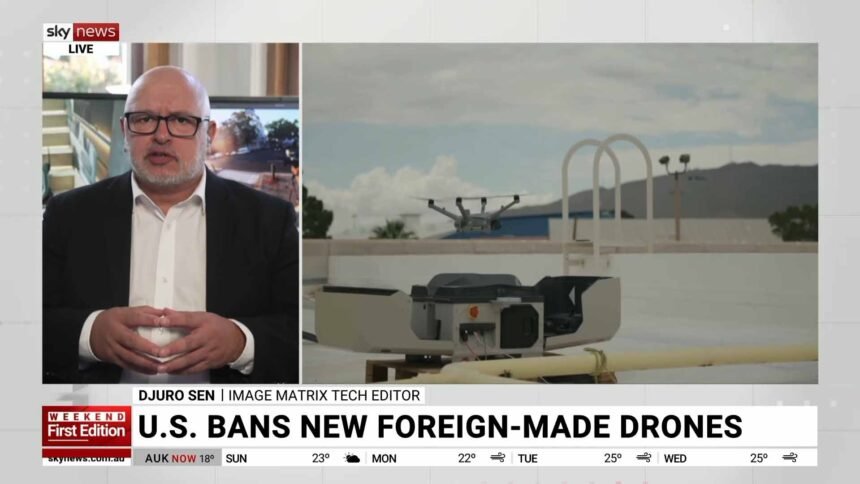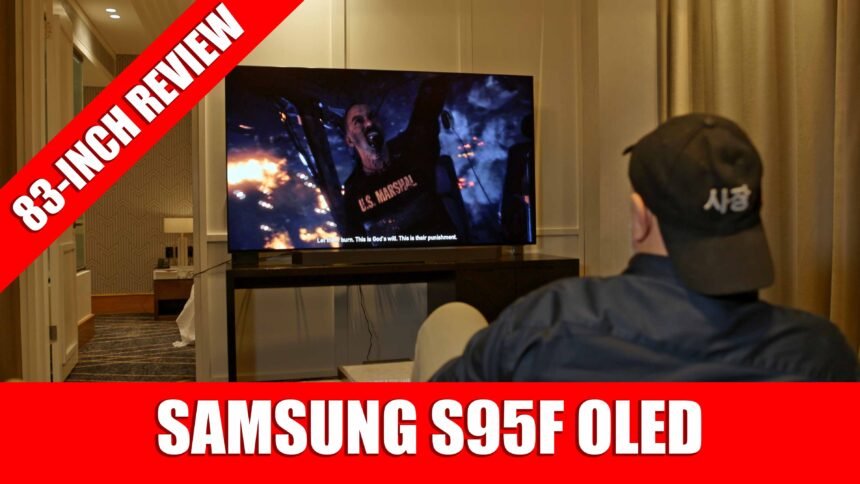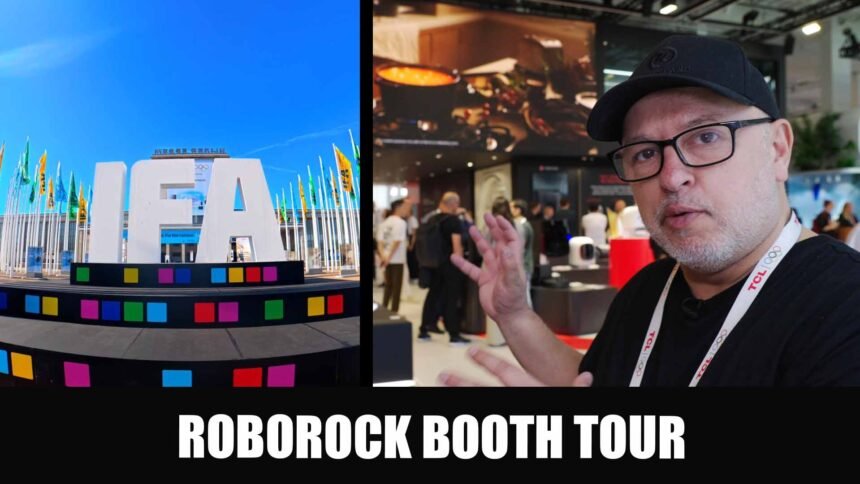The Samsung Z Fold7 is an engineering marvel. Each time I pulled out my review unit I would always take a couple of seconds to admire its ridiculously thin construction. Barely thicker than its own USB-C port. Incredible. But you know what else is incredible? The price. Here in Australia the Fold7 starts at A$2,899 before topping out at an eye watering A$3,549. The pre-order price was a little cheaper but that’s a lot of cash to splash on a phone especially when you can currently get the S25 Ultra 1TB model for A$2,737.

But if you’ve got the coin then why not? After all this phone is a special product. Foldables need far more engineering wizardry than traditional smartphones which are usually made from a block of aluminium. Not only do you get a regular smartphone when folded, you also get a tablet when folded out. So with that said, let’s review the Samsung Galaxy Z Fold7.
DESIGN
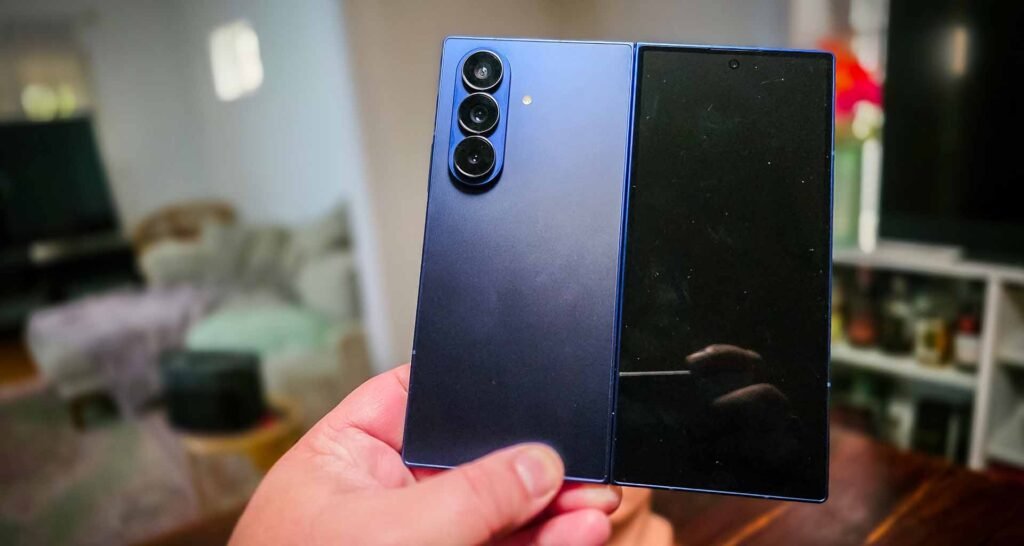
The Fold7 is a stunningly beautiful phone. I’ve been using the ‘blue shadow’ model and being a non-case user, I love showing it off. I especially don’t want a case for the Fold7 because that would defeat the purpose of having a super-thin device. If you doubt my enthusiasm for this phone’s slenderness please go to a store and handle it for yourself. You cannot help but be impressed.
When folded out the Fold7 is just 4.2mm thick and at 215 grams, it is effortless to hold between your forefinger and thumb. When you rest it on your palm and fingers it could easily stay there all day. I often talk about well balanced phones and the Fold7 is one of them. For example, the iPhone 16 Pro Max is only 12 grams heavier and yet, it feels a lot heavier because it’s top heavy. So when you have a phone that folds out to reveal an 8-inch screen, it needs to be light and more importantly, well balanced in the hand.
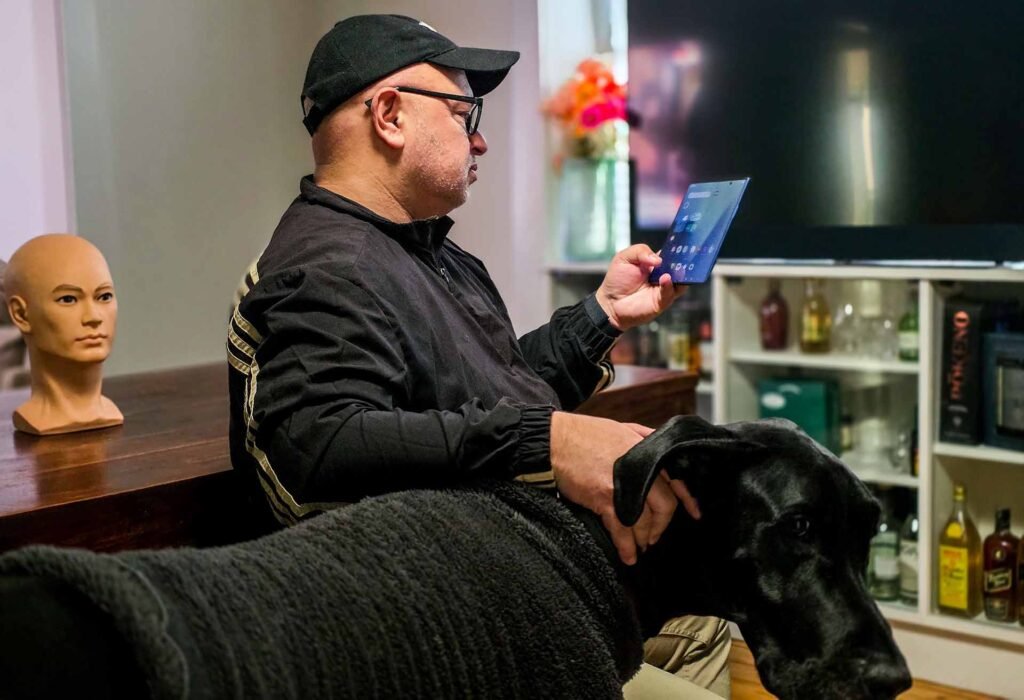
But the insanely thin body actually amplifies the camera bump. It doubles the thickness of the phone (in one area) and makes for a very rocky placement on tables. On the Pixel Fold the camera array runs across a lot more of the back of the phone so it doesn’t rock. But because Samsung and many others place the camera array in the corner, the phone will never be stable on a flat surface when placed this way. To capture photos and videos in the quality that we’re used to from Galaxy phones, the lenses need depth. The front facing cameras do not protrude from the phone’s body but they are inferior to the rear cameras. I rarely used the phone like this but when I did, I wedged the end of a keyboard or something similar underneath the top corner of the phone to keep it from wobbling. It’s annoying but not a deal breaker by any means. Unfortunately this also happens when the phone is in its folded configuration too. Again not a deal breaker, just annoying.

When folded, the Fold7 is 8.9mm thick, just 0.7mm thicker than the Galaxy S25 Ultra. That means the Fold7 looks, feels and behaves like a regular rectangular phone. The USB-C port is on the bottom and the SIM tray on the top. The volume rocker is on the right, bottom side, next to the fingerprint reader/power button.
The ‘blue shadow’ finish covered the whole phone, aside from the displays, and it’s very resistant to fingerprints. I really love how the colour also includes the back of the hinge and the lens housing. It’s easily the best looking phone Samsung has ever made. An improved hinge helps, so the phone opens to as truly flat angle.
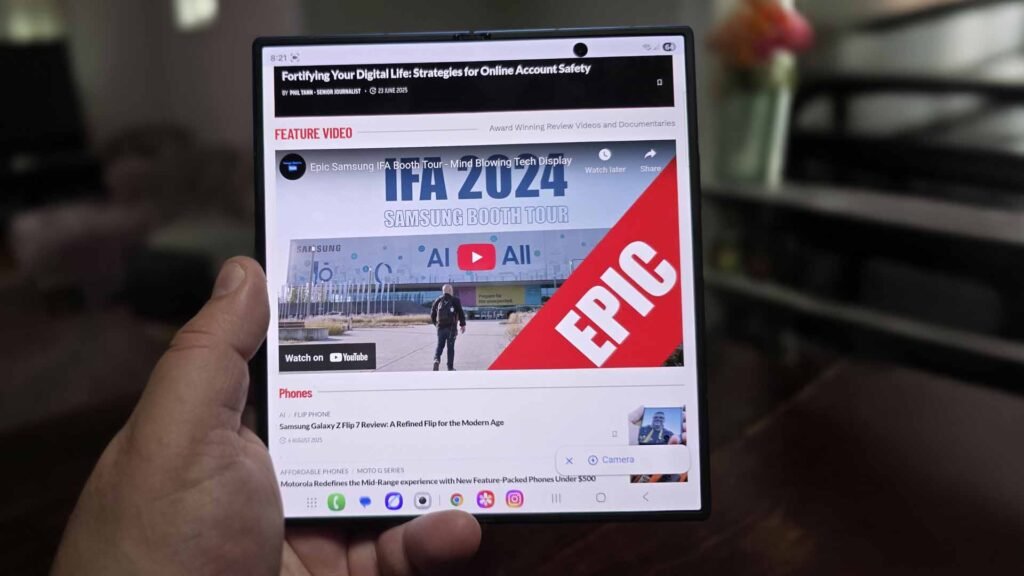
But the phone isn’t dust proof despite being water resistant. It’s official rating is IP48.
DISPLAYS
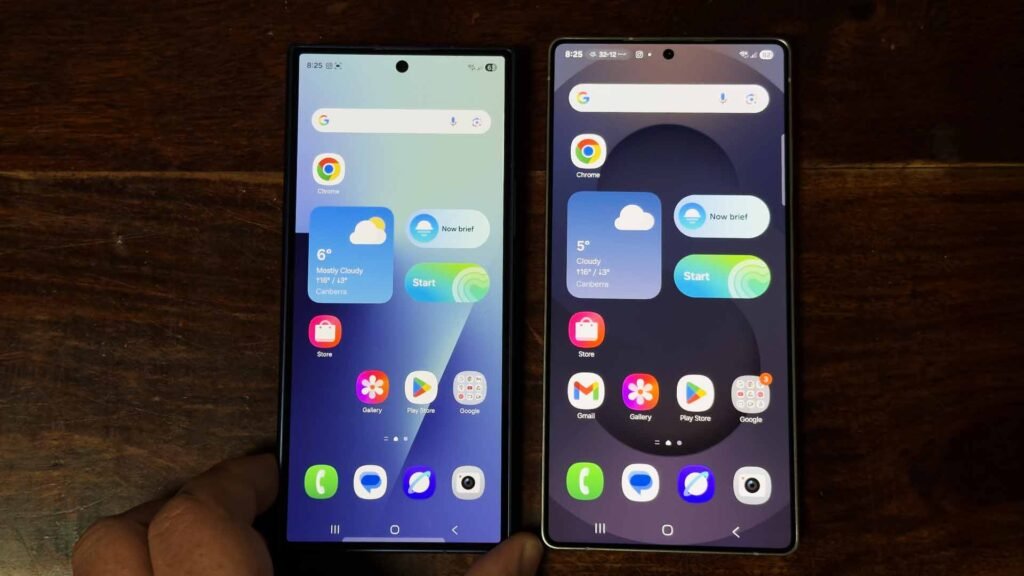
The cover display is now 6.5-inches, up from 6.3-inches, which gives the Fold7 the appearance of a standard bar phone when closed up. This means the phone is just as usable as any other phone when folded. The earlier models were not only thicker, they had a very narrow front display. Now, the aspect ratio on the front of the phone is more like a standard phone.
The 120Hz Dynamic AMOLED 2X display is excellent on the front, and it, like most modern Samsung displays handles reflections very well. Although I didn’t do a smash test, it’s good to know the front display is protected by Corning Gorilla Glass Ceramic 2.
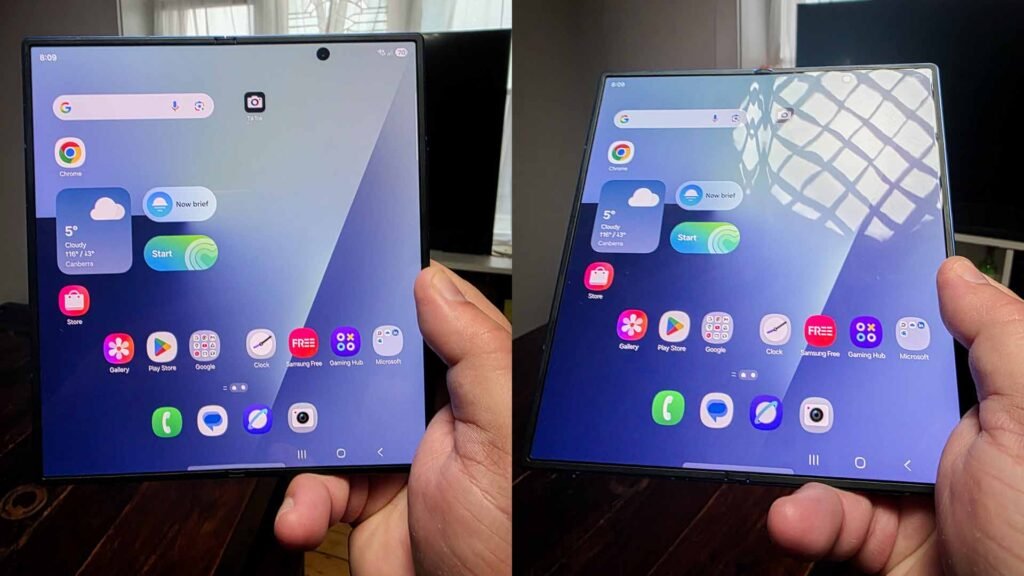
The main display on the inside is now a tablet-sized 8-inches also with a maximum refresh rate of 120Hz. It’s also tougher with thicker glass. With a QXGA+ resolution of 2184 x 1968 pixels, the folded out screen gives users a huge amount of real estate to watch videos, edit content, work on documents, browse social media and websites. The crease is noticeable when viewed at an angle and there’s plenty of ambient light but for most of your activities you won’t even know it’s there. It’s truly remarkable how much Samsung and others have reduced the impact of the crease in foldables.
The display on a device like this must be good when folded or unfolded. So I’m pleased to report that after reading and watching a lot of content over recent weeks, the Fold7 screen is pretty awesome. Just keep the brightness at maximum for best results, especially outside.
CAMERAS
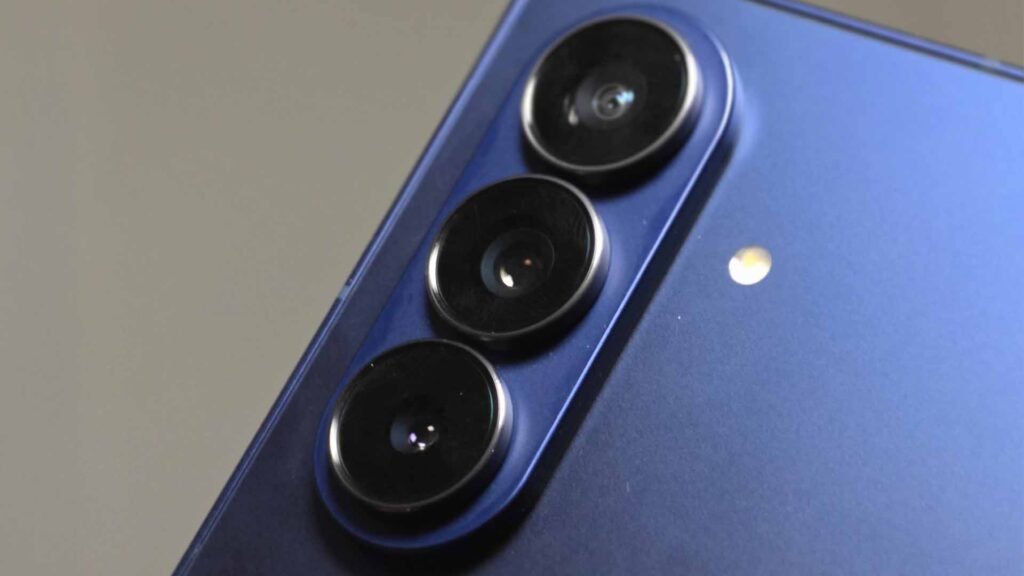
The rear cameras got a big bump this year with the inclusion the S25 Ultra flagship 200MP sensor. This has been a long time coming. I have ranted for years about the lacklustre camera array on the Fold and Flip phones. If I were Samsung, I would go all out with the cameras. There’s no point holding back when you have a phone that starts at almost A$3,000. It might make the camera bump a bit bigger but it’s pretty big anyway so I don’t see an issue there.
But this is good news so I’ll take it. The great thing about the 200MP camera is the ability to combine pixels for better performance. If you want ultra sharp images, then use the 200MP setting. If you want better colour and light performance then select 50MP or 12MP. I would avoid using 200MP unless you are using a tripod or manual settings.
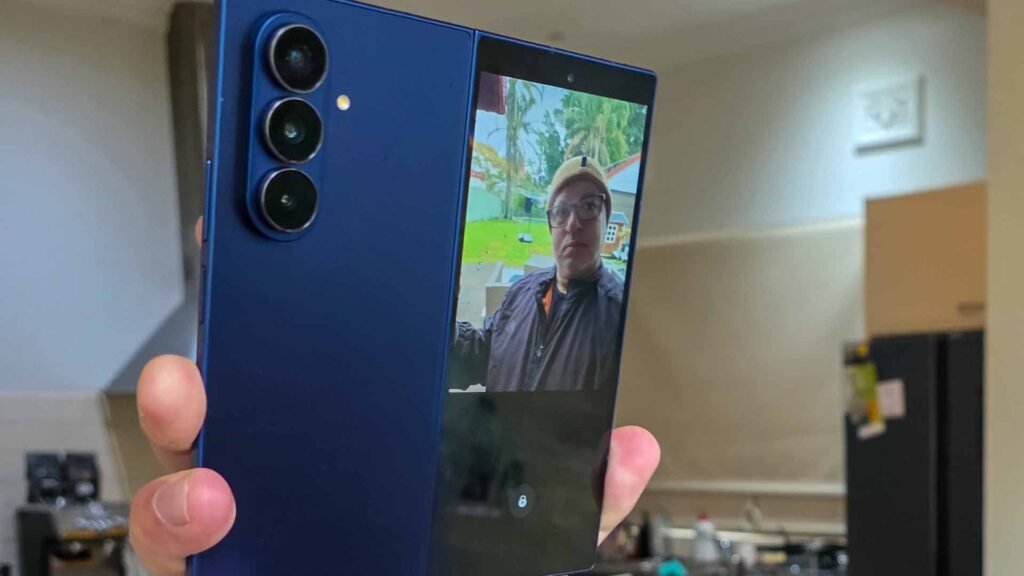
Overall this is an important update for the Fold7. It gives you a fantastic main camera and that is the one you will use the most. I would also encourage you to use the main camera for selfie portraits as you are able to preview the shot on the cover display. A very underrated advantage for foldables.
The telephoto and ultra-wide angle lenses remain at 10MP and 12MP respectively but the ultra-wide sensor has been improved. It has autofocus and the ability to capture macro shots. This has been criminally underreported. The larger pixels also make this a far better option than the previous version of the Fold.
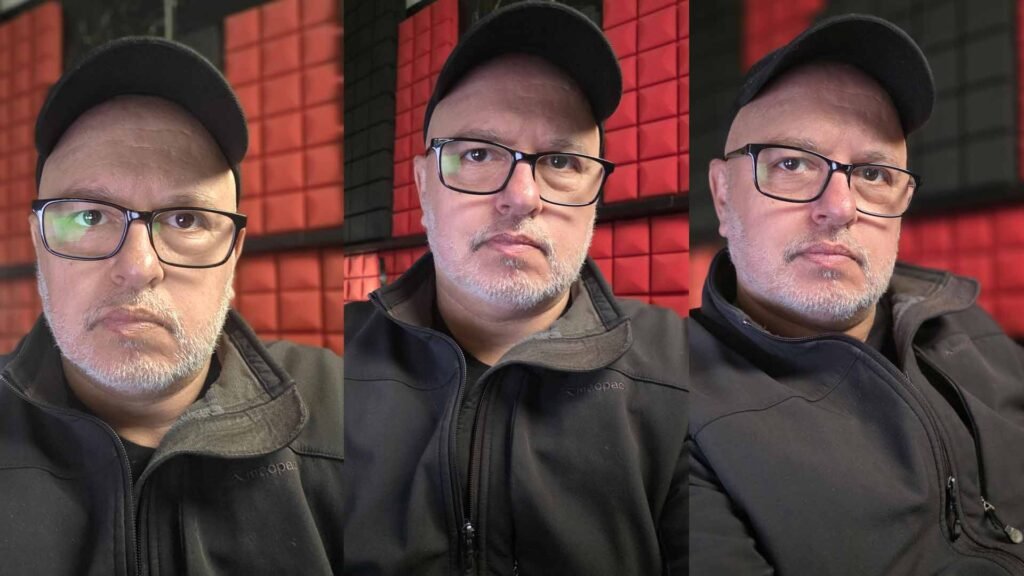
When it comes to the cover display you still have a 10MP ultra-wide camera but on the inner display you see a massive jump from 4MP on the Fold6 to 10MP on the Fold7. This is the hole punch camera which used to be semi-hidden under the display. Samsung has thankfully removed that ‘obstruction’, improving the camera’s performance. The jump to 10MP makes a big difference too because you are going to use this inside display camera a lot. Think about the number of zoom meetings you have a week. This will help present you in a better light.
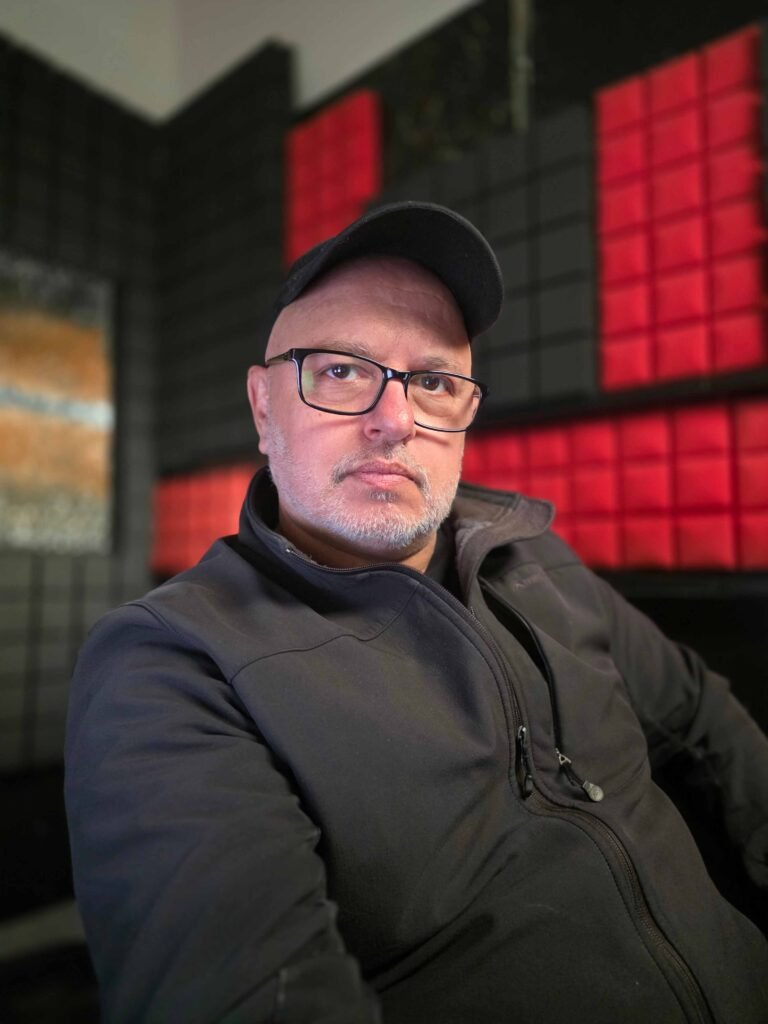
The great thing about taking photos with a foldable is that it has a built-in ‘tripod’. As long as you have a flat surface to work with you can use the hinge to your advantage. This works whether you’re using the rear cameras or inside display camera.
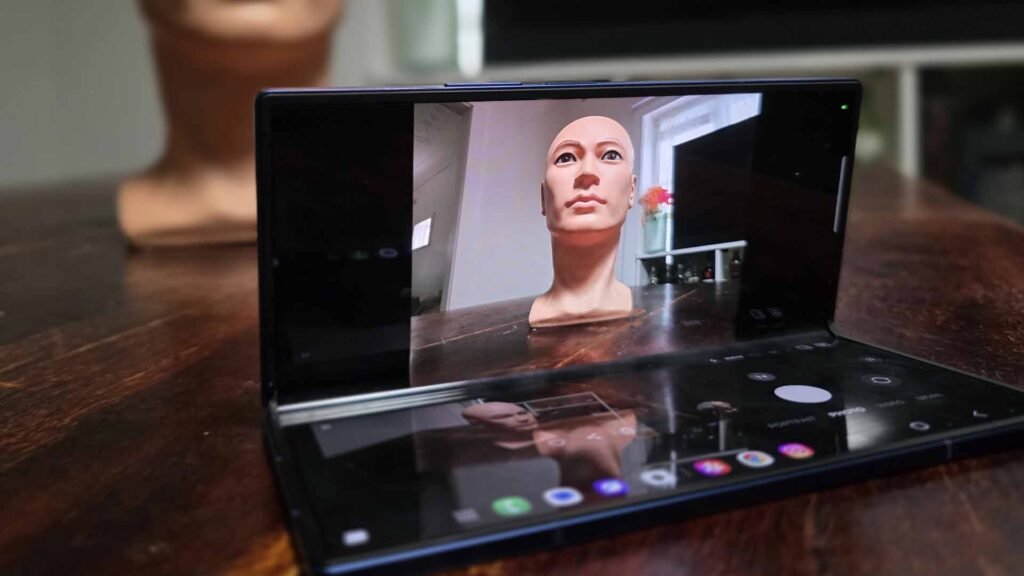
Video performance is excellent and near flagship levels. The 8-inch display is fantastic for shooting, controlling and previewing videos and stills.
PERFORMANCE AND USER EXPERIENCE
The Fold7 is a very snappy, enjoyable phone to use. The transition from activities on the front screen to the inner display is pretty flawless. A typical use case might be watching a YouTube video that you think is worthy of a more immersive experience. You simply open the phone and the video continues on the larger screen.
Unfortunately Samsung has removed S-Pen support for the inner display and that’s upsetting. I mean this 8-inch screen demands a stylus! Clearly Samsung believes it’s not being used enough.
The Fold7 is powered by a Snapdragon 8 Elite processor, running Android 16 and One UI 8. This is very fast and the phone has no lag in any of the key functions I used. The side fingerprint button is usually a pain in the arse with most phones but not with the Fold7. It’s quick and easy to activate. Easily the best I’ve used.
Creating work spaces on the inner display is pretty intuitive and one of the best examples of maximising the extra room is the photo editing app. When you make a change using generative AI you can display the before and after shots side-by-side. This puts this Fold7 is a league of its own. On a standard phone the app would need to wipe back and forth to compare images.
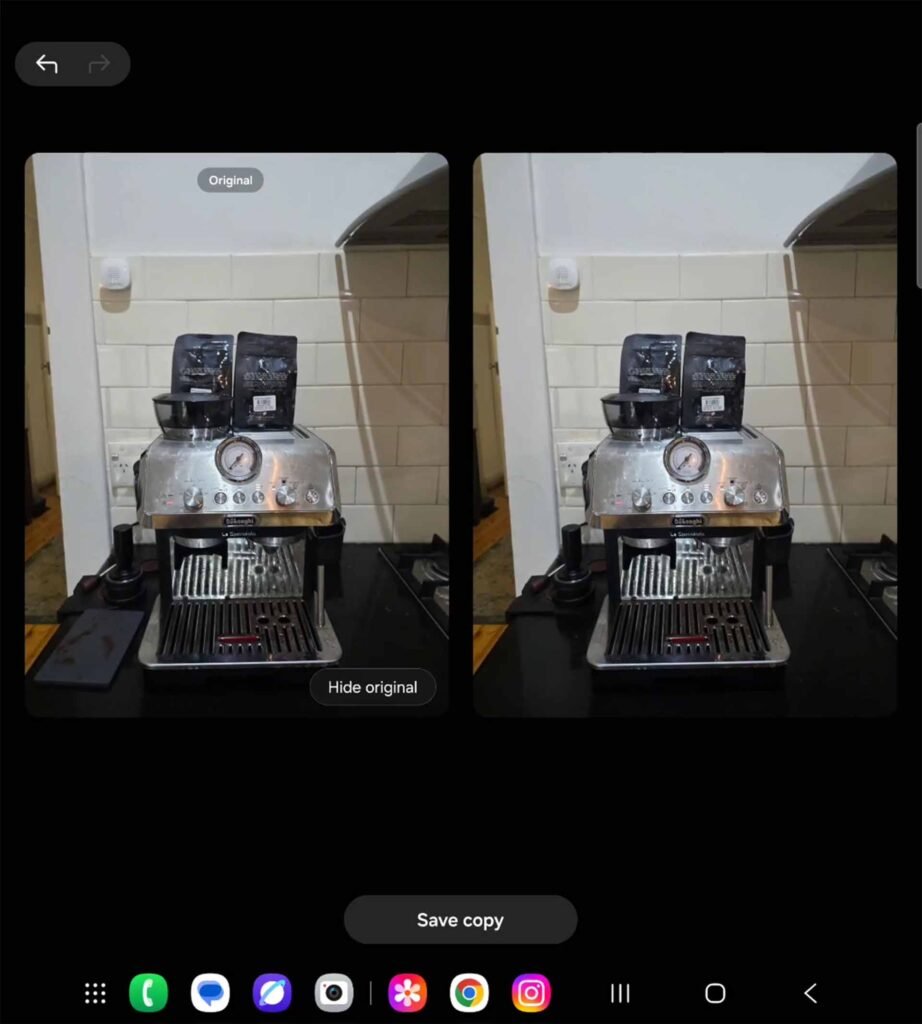
When watching movies the sound can get pretty loud. But there’s virtually no bass, which is understandable given the thin profile of the phone.
BATTERY LIFE
Battery life will vary depending on your needs but if you are a heavy user you’ll need to keep a charger on hand. The battery is still only 4,400 mAh but given its pretty clever power management, it should give you a better performance than the Fold6.
Recharging isn’t slow but it isn’t fast either, 25 watts wired and 15 watts wireless. You do get 4.5 watts reverse wireless which is handy.
PRICING AND AVAILABILITY
The Fold7 is expensive. But it does far more than any normal phone and it’s incredibly beautiful. So with that in mind, here are the prices in Australia.
The Fold7 is available in Shadow Blue, Jetblack, Silver Shadow and Mint Green.
CONCLUSION
If you can afford it .. get it.

